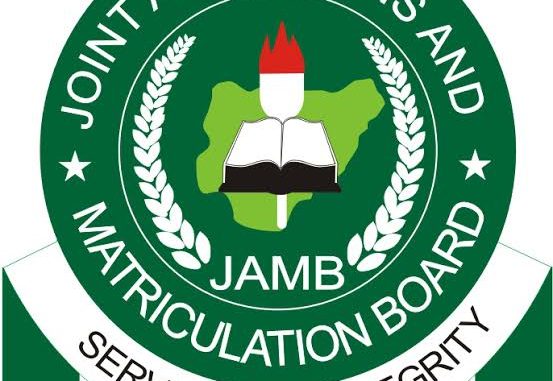
Are you preparing for the 2024/2025 JAMB History exam? Check out our comprehensive guide on the JAMB areas of concentration for History to help you focus your studies and increase your chances of success.
JAMB Areas of Concentration for History 2024/2025
The Joint Admissions and Matriculation Board (JAMB) exam is a crucial test for students seeking admission to tertiary institutions in Nigeria. The History section is an integral part of the exam, accounting for a significant portion of the total score. As such, it’s essential that candidates prepare thoroughly for this section in order to maximize their chances of success. That’s where our guide to JAMB Areas of Concentration for History 2024/2025 comes in.
In this guide, we provide a comprehensive overview of the key topics and concepts students should focus on to excel in the History section of the JAMB exam.
Whether you’re a seasoned student or just starting out, our guide will provide the tools and knowledge you need to succeed on exam day. So if you’re looking to boost your performance on the JAMB exam, read on to learn more about our guide to JAMB Areas of Concentration for History 2024/2025.
Here are the topics and areas of concentration for the Jamb 2024 History exam:
SECTION A: THE NIGERIA AREA UP TO 1800
- Land and Peoples of the Nigeria Area
- Early Centres of Civilization
- Origin and formation of States in the Nigeria Area
- Economic Activities and Growth of States
- External Influences
SECTION B: THE NIGERIA AREA 1800 – 1900
- The Sokoto Caliphate
- Kanem-Borno
- Yorubaland
- Benin
- Nupe
- Igbo
- Efik
- European Penetration and Impact
- British Conquest of the Nigeria Area
SECTION C: NIGERIA 1900 – 1960
- The Establishment of Colonial Rule up to 1914
- The Amalgamation of 1914
- Colonial Administration After the Amalgamation
- The Colonial Economy
- Social Development under Colonial Rule
- Nationalism, Constitutional Developments, and Independence
SECTION D: NIGERIA SINCE INDEPENDENCE
- The politics of the First Republic and Military intervention
- The Civil War
- The Gowon Regime
- Murtala/Obasanjo Regime
- The Second Republic
- The Buhari Regime
- The Babangida Regime
- The Interim National Government (ING)
- The Abacha Regime
- Nigeria in International Organizations
PART II: AFRICA AND THE WIDER WORLD SINCE 1800
SECTION A: WEST AND NORTH AFRICA
- Islamic Reform Movements and State Building in West Africa
- Sierra Leone, Liberia, and Christian Missionary Activities in West Africa
- Egypt under Mohammed Ali and Khedive Ismail
- The Mahdi and Mahdiyya Movement in the Sudan
SECTION B: EASTERN AND SOUTHERN AFRICA
- The Omani Empire
- Ethiopia in the 19th century
- The Mfecane
- The Great Trek
SECTION C: IMPERIALISM, COLONIALISM, AND PROBLEMS OF NATION-BUILDING IN AFRICA
- The New Imperialism and European Occupation of Africa
- Patterns of Colonial Rule in Africa
- The Politics of Decolonization
- Apartheid in South Africa
- Problems of Nation-building in Africa
Frequently Asked Questions
What Are the Jamb 2024 Areas of Concentration for History?
The JAMB 2024 areas of concentration for History are divided into four sections and three parts.
In Section A, the topics covered include the Land and Peoples of the Nigeria Area, Early Centres of Civilization, Origin and Formation of States in the Nigeria Area, Economic Activities and Growth of States, and External Influences.
Section B covers the Nigeria Area between 1800 and 1900, and includes topics such as the Sokoto Caliphate, Kanem-Borno, Yorubaland, Benin, Nupe, Igbo, Efik, European Penetration and Impact, and the British Conquest of the Nigeria Area
Section C focuses on Nigeria from 1900 to 1960, with topics that cover the Establishment of Colonial Rule up to 1914, the Amalgamation of 1914, Colonial Administration After the Amalgamation, the Colonial Economy, Social Development under Colonial Rule, Nationalism, Constitutional Developments, and Independence.
Section D covers Nigeria since independence, including the politics of the First Republic and Military intervention, the Civil War, the Gowon Regime, Murtala/Obasanjo Regime, the Second Republic, the Buhari Regime, the Babangida Regime, the Interim National Government (ING), the Abacha Regime, and Nigeria in International Organizations.
Part II covers Africa and the Wider World Since 1800, and is divided into three sections. Section A covers West and North Africa and includes topics such as Islamic Reform Movements and State Building in West Africa, Sierra Leone, Liberia, and Christian Missionary Activities in West Africa, Egypt under Mohammed Ali and Khedive Ismail, and the Mahdi and Mahdiyya Movement in the Sudan.
Section B covers Eastern and Southern Africa, with topics that include the Omani Empire, Ethiopia in the 19th century, the Mfecane, and the Great Trek.
Finally, Section C covers Imperialism, Colonialism, and Problems of Nation-Building in Africa, with topics such as the New Imperialism and European Occupation of Africa, Patterns of Colonial Rule in Africa, the Politics of Decolonization, Apartheid in South Africa, and Problems of Nation-building in Africa.
Leave a Reply